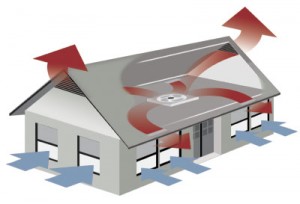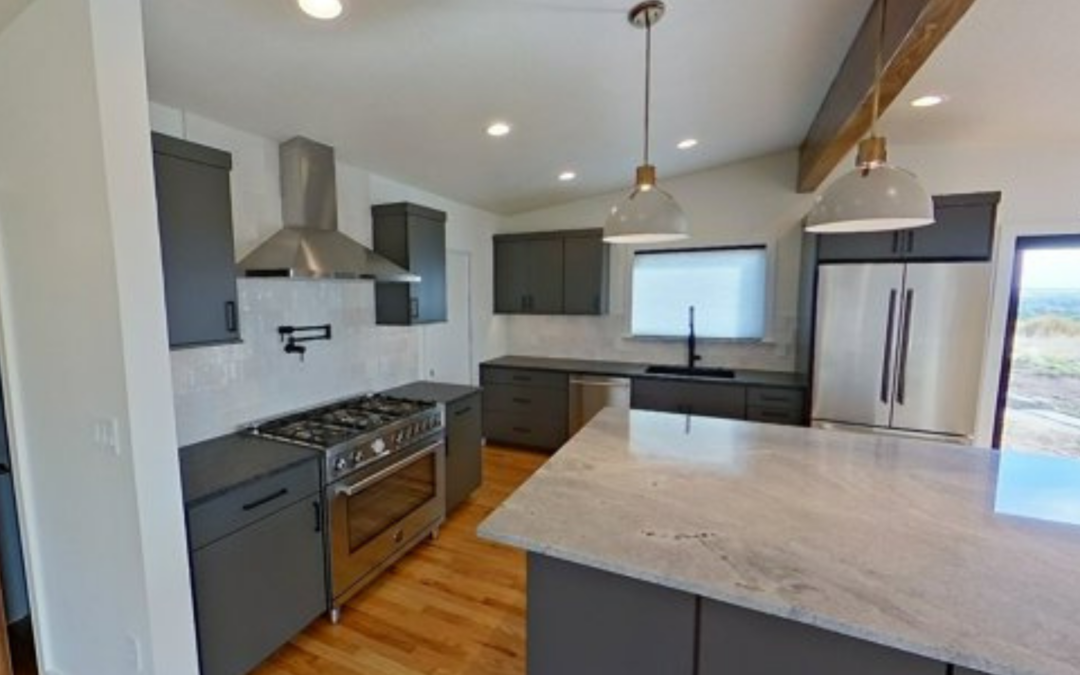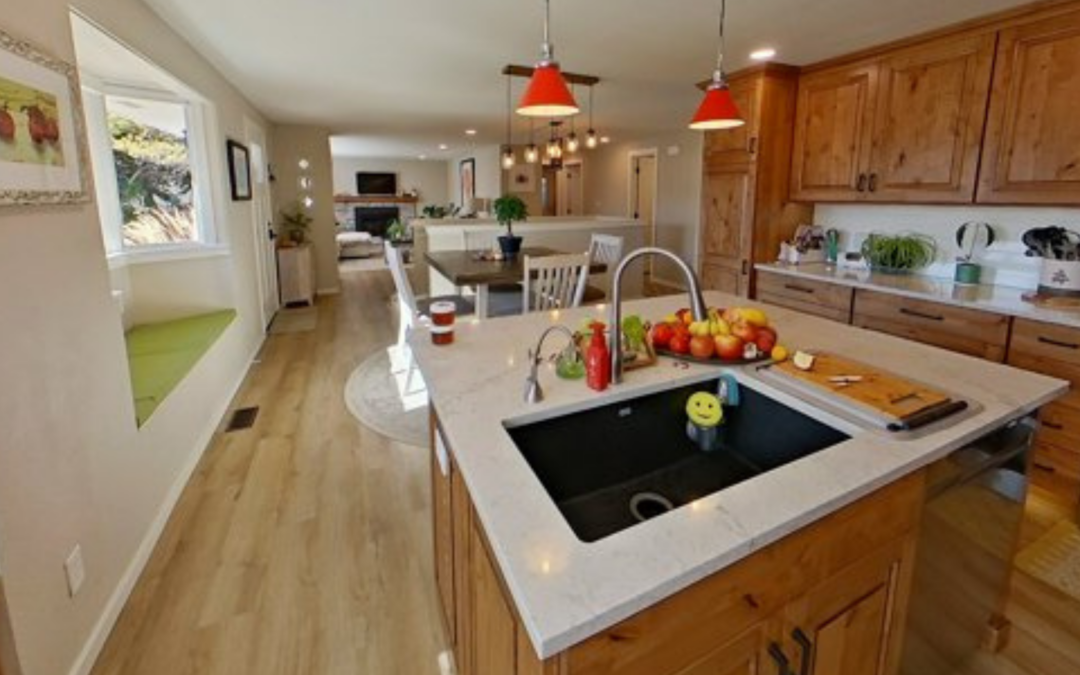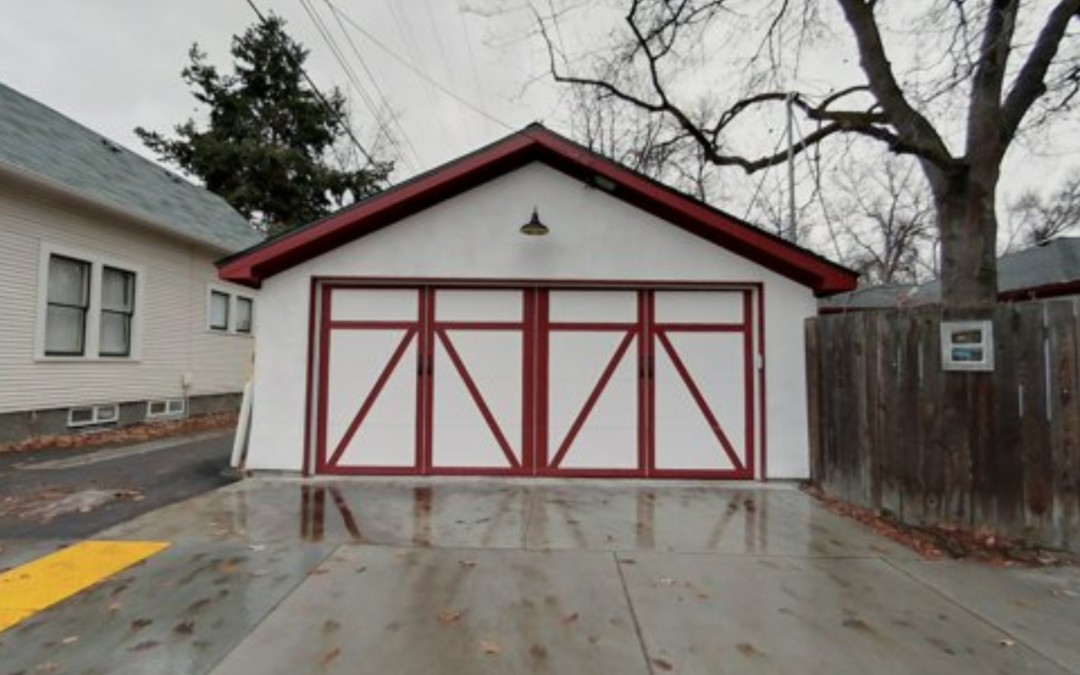As the days grow longer and the temperatures gradually rise, we switch modes form heating to cooling in an effort to maintain a comfortable temperature in our homes. Living on the edge on a desert here in Boise Idaho temperatures rise through the day with our high being around 5pm. Unlike the Bay Area where Noon -1pm is the peak and the ocean breeze cools things down by early evening.
This long heating period allows super-heated air to build up in your attic. Roof temperatures can reach 190 and attics are often 30-50 degrees warmer that the outside air temperature. Most people notice this when they are upstairs in a home with the thermostat on the first floor and they can’t sleep or are being cooked by the Stack Effect while the first floor is comfortable and the basement is freezing. Heat transfer in buildings is an issue that commonly comes up in discussion and is often misunderstood. Here is my go to source on building science.
I have several simple low impact things to check and try before you determine the best approach for your to solving your hot second floor situation.
Understanding the problem
- Check how much insulation you actually have. Often adding the proper amount will improve the indoor a little bit. In our region R-38 is code, that equals roughly 12″ depending on what type you have and if it is compacted etc. This can be a double edge sword too. Insulation works by slowing the transfer of heat, so if your second story is hot the insulation will keep the heat in your home too.
- Next, on your thermostat there is usually a fan on or auto switch. Put it on the ON mode and you will notice a evening of the temperatures throughout your home. The reasons this works is that the thermostat is only sampling the temperature where it is, and the fan in the AUTO position is only on when the thermostat is not satisfied.
- I refer to dueling appliances. The oven is cooking at 450 deg. and the AC is working to keep the home at 70 deg. or the doors and windows are being left open on a scorching day and to no ones surprise the air conditioner just cant keep up.
- Circulating air feels cooler. Having your ceiling fans turning the right way for the season. Usually counter clockwise (blowing down) in the summer and clockwise in the winter (sucking up).
HVAC Issues: Balancing your home may not have been done properly by your HVAC contractor when it was built and or remodeled. On occasion an additional return air is needed up high. I should be noted the the Air Conditioner needs a rest at night too for defrosting, turning them up into the 80’s during the sleep mode will allow this to happen. Always check your air filters, they need to be able to breath. Regular check ups will ensure peak performance for many years and reduce annoying breakdowns.
Roof Ventilation Issues: Adequate roof venting will allow heat to escape passively. I often see power vents added to keep closer to outside air temperature. Extra roof venting will improve the attic breathing, but who wants more roof penetrations. Clogged soffit vents can be a culprit. I see them painted or covered in spider webs and inside disturbed insulation can cover them. These things may seem like tiny details but you must remember they are all interdependent.
Whole House Fans: When these things aren’t working well enough and you want a simple fix for the problem a Whole House Fan may be the answer. Whole House Fan are common the the mid west and south and they are starting to making an appearance here in Idaho. Unlike the attic fan that many of our homes were equipped with that come on thermostatically and suck air in through gable and soffit vents, the whole house fan works in climates where the evenings or mornings are cool. The idea is to place a fan in the upstairs ceiling and opening windows on the lower levels. Once activated (optional) insulated doors open and the fan sucks air in from the outside from open screened windows or a door and pushes it into the attic essentially flushing out the super heated air via gable and roof vents. Once your home is filled with fresh air and cooled the fan is shut off and the home is closed up again for the day. Incidentally it will help prolong the life of your roof by keeping the shingles cooler.
Levco has installed several different types and have a unanimous fantastic response. The units range from $975-$1,500 and require an outlet or are hardwired into the attic. Each install is unique, average cost complete is $2,100. Whole House Fans can take as little as half a day to install. So when remodeling in Boise Idaho, consider adding this product as a stand alone project or in addition to a larger project. Here is a link to a Tamarack Brand fan we recommend and install often. I finally installed one in my house and I love it!
Whether yours is an early 1900’s vintage with relatively little insulation, or a newer one that is well insulated, there are lots of ways to spend your money to improve energy efficiency. Whole House Fans are an inexpensive new tool that can actually save money in the long run, but also improve comfort as well as indoor air quality immediately.
Your comments are welcome. To ask questions or get more information about remodeling, click here to email me directly, or call 208-947-7261









I use a hybrid approach; I have central ac and Eco Breeze. I turn my AC thermostat up to save money and energy creating a maximum indoor temperature, but use Eco Breeze and outside air to cool my home below air conditioner thermostat settings for increased comfort and savings. In the morning my house is cooler than with AC only, reducing the need for AC during the day. Since Eco Breeze is automatic, only operating when it is cooler and dryer outside, I don’t need to open and close my windows or worry about rain.
George, thanks for the comment. Do you happen to sell this device or are you endorsing something that you use?
I’m looking for information about how to retrofit a digital thermostat to and older existing house fan. The fan is currently wired 120 with a variable speed on off switch. Any info would be much appreciated.
I can think of several ways to do it. Unfortunately I need some more information from you, This house fan is it in the attic? or elsewhere. My suspicion is that it is one that controls a roof mounted exhaust fan. if you don’t mind… call me and we can sort out whatever we need to.208-947-7261
Can an Air Handler unit be used in the same way as a whole house fan?
From my understanding of a an air handler unit, I suppose it could, if set up properly. The goal is to eliminate stagnant hot air from the home with a powered fan blowing into the attic which in turn sucks it’s replacement air from the environment and cools the home and attic too. Provided that it is operated when it is cooler outside. Any sort of powered ventilation will actually do the job. I would consult a commercial HVAC contractor first to be sure because “Air Handler” is a generic term for lots of set ups in the commercial world.
Great article Joe. Whole house fans are indeed a great way to cool your home and save money. Tamarack takes whole house fans a step further with our insulated, sealing doors. No air leakage between the house and attic when your fan is not in use! Looking forward to working with you in the future!
I agree completely. Every install we have done has been praised by my client’s. I think these fans are a known better in the Midwest, but Boise and the Treasure Valley are prime locations for whole house fans too. Thanks for the support!
I recently purchased a ducted whole house fan from Centric Air. It’s extremely quiet and very powerful. I was able to install it myself rather easily since the system does not require any framing or structural modifications. I also liked the fact that it came with a remote control so I did not have to run any wires down the wall to a switch making for an even easier installation.
You sound like a salesman for the product? I am happy for you, I think whole house fans are a great tool for certain situations. Like pizzas however, they are not all the same. I am not familiar with that brand you mentioned, but it sounds similar to the ones we use as well.
In Boise, (Eagle) what temperature should you set the thermostat for an attic fan?
thanks for any insight.
Mitch
I was recently in an attic that was 130 Degrees when it was about 80 degrees outside. My thought is that you never want the attic over 100 Degrees. That means not hotter than it gets outside. I would set it at 100ish. A properly ventilated attic will make your shingles last longer and decrease the possibility of a hot cap that would radiate heat into your home. The next level of ventilation is a whole house fan. We can talk about that later. I use both. Joe